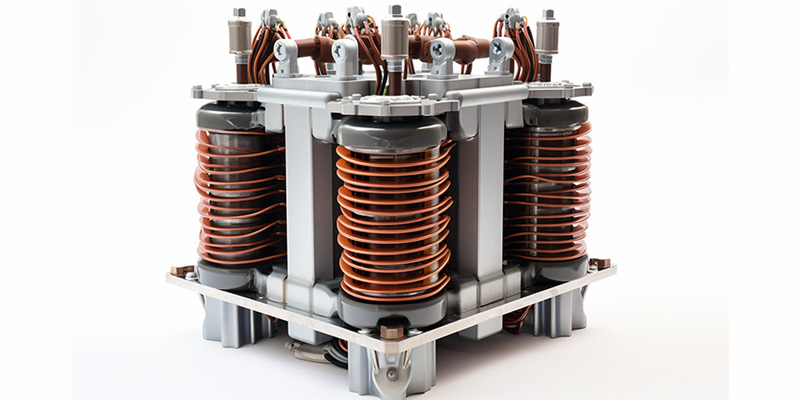
What Are You Looking For?
The specification that transformer windings should not exceed a 65°C temperature rise is not an arbitrary industry convention—it is a carefully engineered threshold grounded in electrothermal science, insulation material capabilities, and long-term operational safety. This limit ensures that transformers remain reliable, efficient, and safe under typical operating conditions. The rationale behind this standard encompasses the following key factors:

During operation, transformers continuously dissipate energy in the form of iron losses (core losses) and copper losses (resistive heating in windings). These losses are inevitably converted into heat, raising the temperature of both the windings and the magnetic core. If this thermal accumulation is left unchecked, it leads to accelerated deterioration of insulation materials.
The degradation of insulation is exponential with temperature. A commonly accepted rule of thumb states that for every 10°C rise above the rated thermal limit, the insulation lifespan is halved. By limiting the temperature rise to 65°C, engineers ensure that the operating temperature stays well within the tolerable range for most insulation classes, especially when ambient temperature is factored in. This not only prolongs the operational life of the transformer but also reduces downtime, maintenance frequency, and replacement costs.
The thermal behavior of a transformer is intrinsically tied to its load profile. Under fluctuating or heavy loads, the internal temperature can climb swiftly, especially in transformers lacking advanced cooling systems. The 65°C limit acts as a thermal buffer, providing enough margin to accommodate short-term overloads without breaching material tolerances.
Inversely, this thermal ceiling also governs the transformer's overload capability. A lower allowable temperature rise means the transformer can safely absorb short-duration overcurrents without permanent damage. However, excessively strict limits could hamper the transformer's ability to handle transient surges, reducing its functional flexibility. Thus, the 65°C benchmark strikes a pragmatic balance between resilience and restraint.
Efficiency and heat are inextricably linked in transformer operation. As the winding temperature increases, so does electrical resistance, leading to higher copper losses and a corresponding drop in efficiency. Thermal stress can also cause mechanical distortions in the windings, affecting magnetic coupling and performance consistency.
Maintaining a moderate temperature rise within 65°C helps preserve the delicate electro-mechanical harmony of the transformer. Lower internal temperatures stabilize resistance levels, minimize thermal expansion, and reduce energy losses. The result is a transformer that runs closer to its design efficiency, consuming less energy and producing fewer unwanted emissions—an increasingly critical consideration in energy-conscious installations.
The heart of any transformer lies in its insulation system. Without reliable insulation, even modest overvoltages or temperature spikes can cause catastrophic failure. Most oil-immersed transformers utilize Class A insulation, with a maximum thermal endurance of 105°C. Given that standard ambient temperatures are typically assumed to be around 40°C, a 65°C temperature rise brings the system precisely to that 105°C threshold.
This alignment ensures that transformers can operate continuously under rated load without breaching the thermal limits of their insulation. Moreover, even in adverse conditions where the full 105°C is reached temporarily, the short duration ensures that thermal degradation remains minimal. This temperature ceiling, therefore, acts as both a safeguard and a design benchmark for insulation selection and overall thermal engineering.
Safety is paramount in electrical infrastructure. Excessive temperatures not only threaten internal components but also increase the likelihood of external hazards such as fire. Transformers exposed to prolonged overheating may suffer insulation breakdown, arcing, oil degradation, or even explosion.
By mandating a 65°C temperature rise limit, regulators effectively minimize the risk of such thermal runaway scenarios. It ensures that even in warm climates, transformers operate with a safe thermal margin. This regulation supports fire prevention protocols, enhances system reliability, and protects personnel and property.
While 65°C is widely adopted, it is not an immutable standard. The actual permissible temperature rise can vary depending on transformer type, rated power, cooling method, environmental conditions, and specific application requirements. For instance, dry-type transformers or those in high-demand industrial environments may be subject to different temperature criteria or enhanced cooling designs.
In mission-critical or extreme-duty scenarios, engineers may impose stricter thermal constraints to ensure absolute reliability. Alternatively, high-performance insulation classes (such as Class F or H) may allow for higher temperature tolerances, offering greater design flexibility. The 65°C guideline thus serves as a foundational benchmark—reliable for most standard applications, but adaptable where necessary.
The 65°C temperature rise limit for transformer windings is the product of rigorous engineering judgment and material science. It balances thermal endurance, efficiency, longevity, and safety in one cohesive specification. By adhering to this standard, transformer manufacturers and operators can ensure that their equipment performs optimally across a range of environmental and operational conditions, without compromising on reliability or safety.